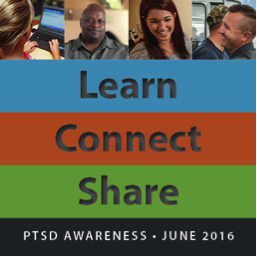Child Sexual Assault Signs, Symptoms, & Treatment: PTSD Awareness Month
One of the scariest and most devastating thoughts in the world is imagining a child experiencing and suffering the horrors of sexual abuse. This should never be a reality for any individual, as the biological, psychological/ emotional, social, and spiritual impact of this trauma permeates through every layer of an individual’s life. The U.S. Department of Health and Human Services Children’s Bureau report in 2010 found that 9.2% of victimized children were sexually assaulted, and studies by Dr. David Finkelhor showed that 1 in 5 girls and 1 in 20 boys is a victim of child sexual abuse. Each year in the U.S., 1 million children experience substantiated abuse (U.S. Department of Health and Human Services, 2007), and Perry (2003) has found that 5 million children experience some form of traumatic experience each year. As it has been discussed in various literature including Baker et. al. (2016), “experiencing sexual victimization is an established risk factor for poorer mental health outcomes, including PTSD, depression, and substance abuse”. The post-traumatic stress response from sexual assault, no matter the age of the victim/ survivor, can be immediate, vacillating, chronic, and lifelong. In support of June PTSD Awareness Month, it is imperative to discuss the signs of child sexual abuse, what their loved ones can do to help, how this traumatizing experience is often addressed in therapy with the child victim/ survivor, and how their parents/guardians can assist their recovery.
When it comes to children, it is critical for the adults in their lives to be attentive to their changes in behavior and emotion. These changes in behavior and emotion can be indicators of potential distress, especially since children do not have completely developed communication skills. According to the U.S. Department of Justice, there are numerous behavioral and emotional warning signs that could indicate the possibility of child sexual abuse. If you notice the following in a child or adolescent, seeking help and asking questions should be the next steps:
- Nightmares or sleep problems without explanation;
- Distracted or distant at odd times;
- Sudden change in eating habits; refusing to eat; trouble swallowing;
- Sudden mood swings;
- “Clues” that seem likely to provoke a discussion about sexual issues;
- New/ unusual fear of certain people or places; refusing to talk about a secret shared with an adult or older child;
- Talks about a new older friend;
- Suddenly has money or other gifts without reason;
- Thinks of self or body as repulsive, dirty or bad;
- Exhibits adult-like sexual behaviors.
These aforementioned signs are general indicators of sexual abuse in children. Since children are still going through cognitive, brain, and psychological/ emotional development, it is greatly difficult for them to communicate their thoughts and feelings, which makes it essential for their parents/ guardians, teachers, coaches, or any adult in their lives to be keen to these signals. When adults pick up on these signs and seek immediate help to treat the child victim/ survivor, it prevents the individual from suffering in silence for a prolonged period of time.
Not only is the experience of sexual assault extremely traumatizing, it is also a catalyst for further various complications and potential co-occurring disorders. According to D’Andrea, Ford, Stolbach, Spinazzola, & van der Kolk (2012), 40% of children with trauma history have at least one other mood, anxiety, or disruptive behavior disorder diagnosis; this is why it is critical to immediately intervene. Children are already going through a tremendous amount of development, and having a traumatic event occur can cause their development thus far to regress, decline, or become disordered. In order to prevent even further damage, urgent action needs to occur to help the child victim/ survivor begin their healing journey. If the sexual abuse is not noticed for a long period of time, the victim/ survivor is more likely to develop chronic and severe coexisting problems with emotion regulation, impulse control, attention and cognition, dissociation, interpersonal relationship, attributions (D’Andrea, Ford, Stolbach, Spinazzola, & van der Kolk, 2012), and even academic difficulties later on (Baket et. al., 2016). With this knowledge, it is important for their loved ones to know where to seek help.
It becomes an incredibly overwhelming and frightening time once a child discloses abuse (or abuse is suspected), and it is helpful for one to know what steps need to occur. The critical steps that need to follow, include: bringing the child to a physician or emergency room (medical action), contacting police and calling the Department of Child and Family Services (DCFS) (legal action), seeking out therapy for the child, and possibly therapy for their family and/ or loved ones (psychological/ emotional support). Once an adult picks up on these possible signs of child sexual abuse/ assault and the action-steps have been followed, it is essential to understand the process of therapy for the child, and how non-offending parents/ guardians can support the victim/ survivor.
Mental health professionals understand that it is already challenging for children to explain and discuss their thoughts and feelings. The experience of trauma can cause communication skills to be even more impeded, preventing the child from expressing their internal state; thus, creating an extremely challenging compounding effect. With this understanding, therapists utilize play therapy with child victims of sexual abuse. Play therapy enables children to express themselves through a medium that is comfortable,
familiar, and unthreatening to them. As play therapy experts such as Eliana Gil, Bruce Perry, and Bessel Van der Kolk have expressed, play is the language and natural world of a child. The literature also mentions play therapy as an effective means of responding to the mental health needs of children, especially in regards to the treatment of trauma. Play therapy enriches the child’s brain, and “unsticks” the traumatic brain by opening up their nonverbal parts such as the amygdala, thalamus, hippocampus, and brain stem (Homeye & Morrison, 2008). Play therapy provides the child physical activity that allows them to “’act/ play out’ the event” in a safe space, which enables them to make sense of their world while processing the event. In addition to individualized therapy for the child, therapists have also found the involvement of and collaboration with non-offending parents to be beneficial to the child’s improvement and recovery.
There has been growing support for the inclusion of parents/ guardians in the therapeutic process. Not only have parents/ guardians been included more in the therapy process overall, but also in the therapy process specific to child sexual abuse. The purpose of having the parent involved includes fostering feelings of safety and security (top priority), and addressing and working on their attachment relationship with one another, which can often be disrupted with the non-offending parent/guardian after the child experiences abuse/ assault. When the therapist is working with the child victim/ survivor and non-offending guardians, it often explained that therapy for the child is usually long-term and should occur at critical points throughout their life; this is an important piece for the child’s family to understand. After addressing all the signs, symptoms, and steps, hopefully the child will be able to enter into their recovery journey with the support of their loved ones.
It is my hope that by discussing the signs and symptoms, action-steps, therapeutic approach, and parent involvement all in regards to child sexual abuse, it will help raise awareness of this issue and assist in getting information out to those who need it. Additionally, Naperville Counseling Center has psychotherapists, such as myself, who have experience in working with these victims/ survivors on their journey to recovery from this trauma, as well as other types of trauma. Naperville Counseling Center offers excellent, high quality counseling and psychological services for all ages to those living in DuPage County and surrounding areas. Please feel free to contact me if you have any questions, and/or visit our website for more information: www.napervillecounseling.com.
Crisis Lines:
Chicago Rape Crisis Hotline (1-888-293-2080)
RAINN Hotline (1-800-656-HOPE)
YWCA DuPage County Hotline (630-971-3927)
References:
Baker, M.R., Frazier, P.A., Greer, C., Paulsen, J.A., Howard, K., Meredith, L.N., Anders, S.L., &
Shallcross, S.L. (2016). Sexual victimization history predicts academic performance
in college women. Journal of Counseling Psychology. Advance online publication.
http://dx.doi.org/10.1037/cou0000146.
D’Andrea, W., Ford, J., Stolbach, B., Spinazzola, J., & van der Kolk, B.A. (2012).
Understanding interpersonal trauma in children: Why we need a
developmentally appropriate trauma diagnosis. American Journal of
Orthopsychiatry, 82 (2), 187-200.
Green, E. J. (2008). Reenvisioning Junian analytical play therapy with child sexual
assault survivors. International Journal of Play Therapy, 17 (2), 102-121.
Hill, A. (2006). Play therapy with sexually abused children: Including parents in
therapeutic play. Child and Family Social Work, 11, 316-324.
Homeye, L. E. & Morrison, M.O. (2008). Play therapy: Practice, issues, and trends.
American Journal of Play.
National Center for PTSD (2016). Help raise PTSD awareness. Retrieved from: http://www.ptsd.va.gov/about/ptsd-awareness/RaisePTSD_Awareness.pdf
Perry, B. (2003). Effects of traumatic events on children. The ChildTrauma Academy. http://www.mentalhealthconnection.org/pdfs/perry-handout-effects-of-
trauma.pdf.
Ruiz, E. (2016). Trauma symptoms in a diverse population of sexually abused children.
Psychological Trauma: Theory, Research, Practice, and Policy. Advance online publication. http://dx.doi.org/10.1037/tra0000160.
The National Center for Victims of Crime. Child sexual abuse statistics. Retrieved from:https://victimsofcrime.org/media/reporting-on-child-sexual-abuse/child-sexual-abuse-statistics.
The National Child Traumatic Stress Network. But who should I tell? Questions and answers
about seeking help after sexual abuse (2011).

